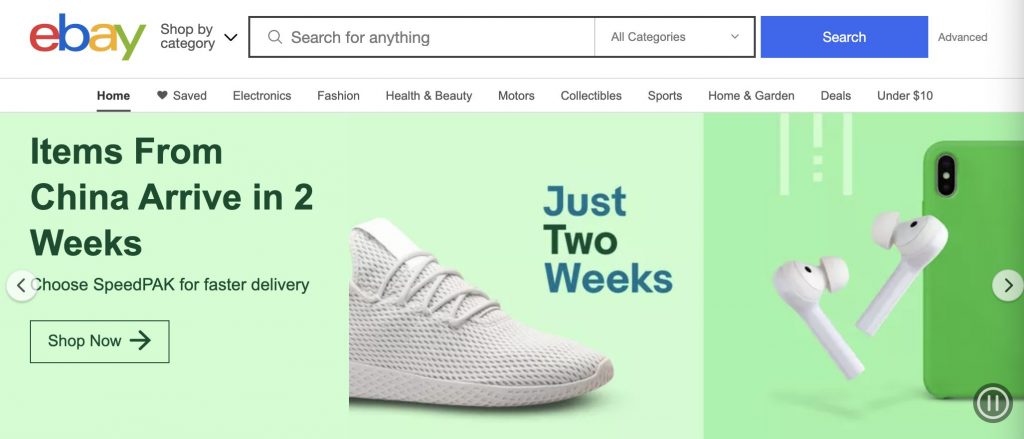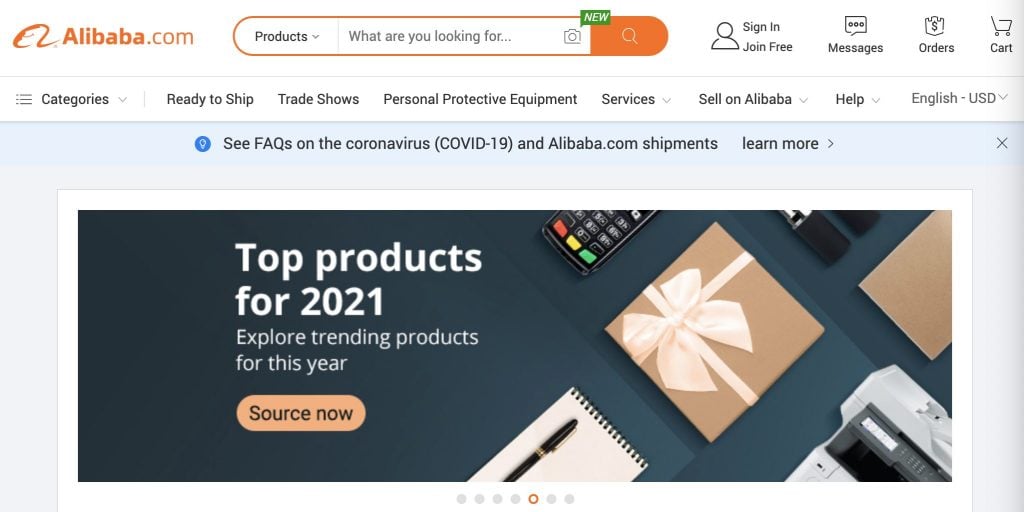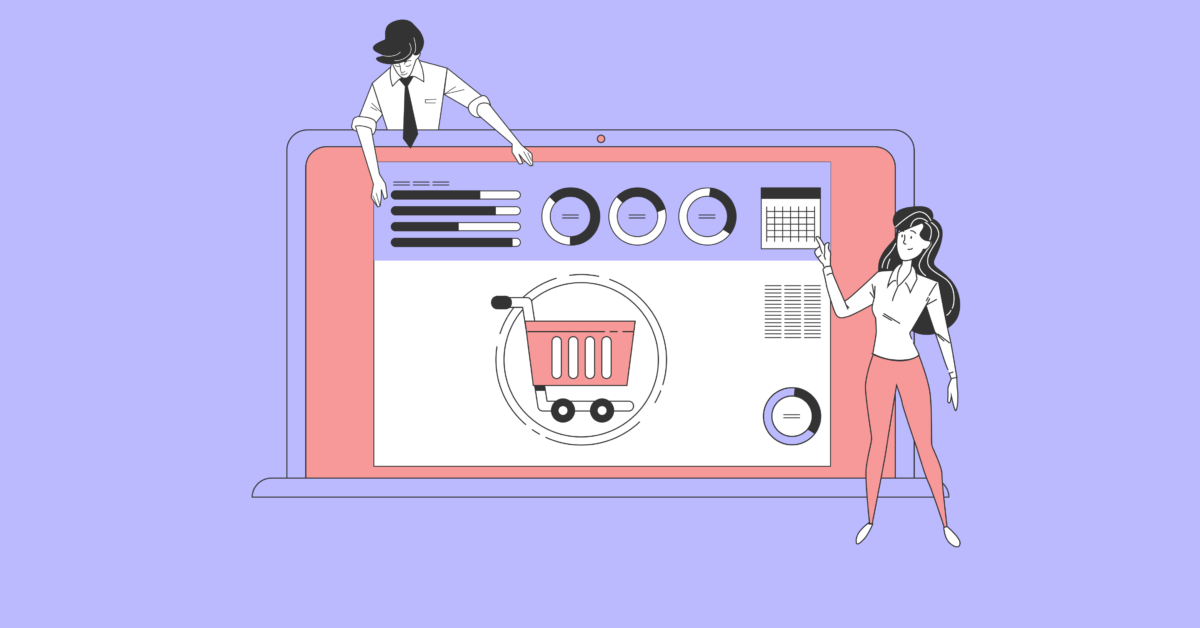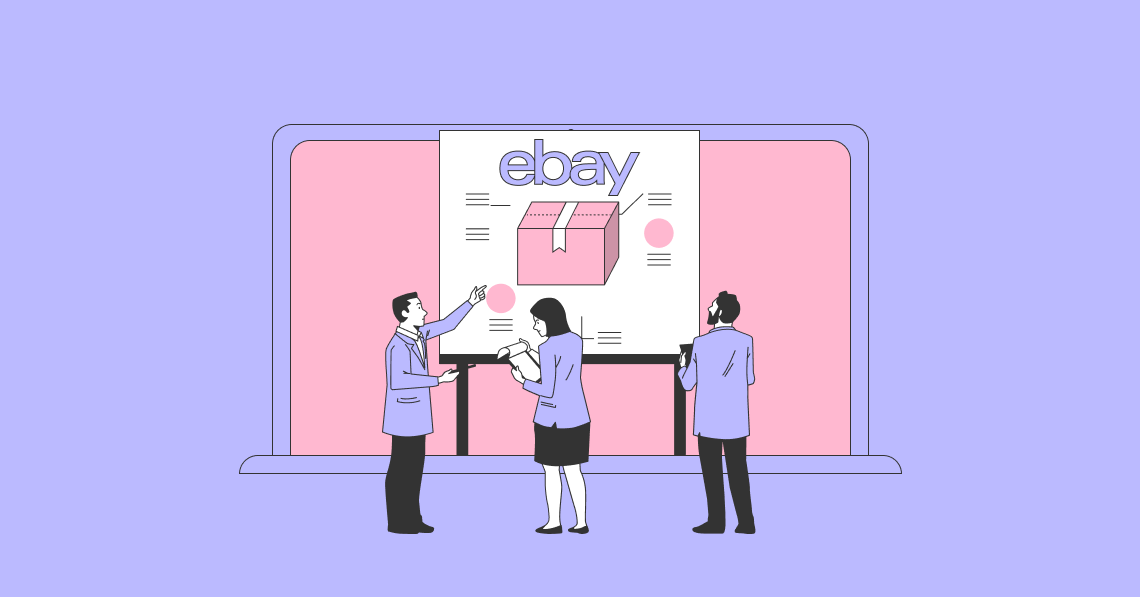Amazon sells millions of products. While choice is good for consumers, it makes it a lot more challenging for sellers who are new to this industry and need to find their way through millions of products to identify the specialized segment of the market they want to enter. In fact, even more experienced sellers on Amazon struggle with this.
Simply because Amazon is the most popular online retailer (according to Statista, Amazon was responsible for 45% of US eCommerce spending in 2019), it doesn't mean that your products will also sell. So, to help you get started on Amazon and identify which products will be profitable, we have created this comprehensive guide about selling on Amazon. In our guide, we share practical tips for how to identify the right products that will set you up for success and where you can find these products to resell on Amazon.
Your A to Z Guide to Selling on Amazon:
- Should You Start an Amazon Business?
- Can You Make Money By Selling on Amazon?
- How Do You Start Selling on Amazon?
- Which Are the Best Products to Sell on Amazon?
- Which Are the Worst Products to Sell?
- How Do You Identify Product Items to Sell on Amazon?
- How Do You Decide Which Products to Sell on Amazon?
- Where Do You Find Products to Sell on Amazon?
Should You Start an Amazon Business?
Before you launch into hours of product research, it's actually important to ask yourself if selling on Amazon will be the right course of action for you. If you want to begin selling products online, starting an Amazon business is an excellent way (even more so if you’re trying to avoid technology). If you can sell products that boast a unique feature, starting an Amazon business can be really advantageous.
That being said, to rely solely on Amazon for selling your products should not be your long-term plan. The reason for this is quite simple. Once the competition increases, it will become more challenging for you to sell on Amazon and you will have fewer chances of making a substantial profit. According to research on Ecommerce Fuel, in 2019 the non-Amazon seller revenue grew faster than those selling on Amazon. So, selling via other platforms can also be profitable.
Also, if you are thinking about using Amazon to sell wholesale products or to drop-ship, you want to consider this approach carefully. It can be hard to buy someone else’s brand only to resell it on Amazon as the competition is extremely strong.
With regards to drop-shipping specifically, there are a number of rules about drop-shipping when you sell on Amazon. While it is allowed, you will find that the real answer is actually no. For example, as per Amazon’s rules you must identify yourself as the seller on all the product packaging, while you may not identify a third-party drop-shipper on your packaging. You will also have to adhere to all of your Amazon seller terms and take all responsibility for returns. So, if you want to drop-ship on Amazon, you will still have to deal with customers and suppliers (the very thing that people are trying to avoid). Instead, it will make more sense for you to check out Fulfillment by Amazon (Amazon FBA) which we will discuss in more detail in the next section.
Can You Make Money By Selling on Amazon?
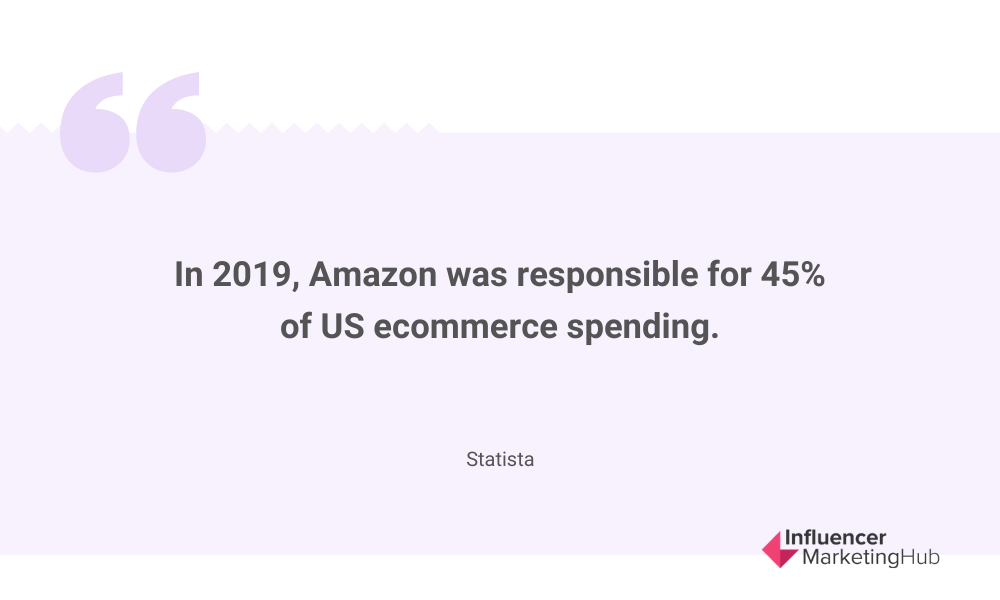
Amazon is one of the most popular online shopping platforms and its popularity is not looking to decline any time soon. It's particularly popular among third-party sellers who are offering some serious competition for Amazon first-party sales.
Thanks to its huge popularity, you can make money by selling your brand on Amazon. You can either opt to take care of the customer service and shipping on your own or sign up for Fulfillment by Amazon (Amazon FBA) which provides comprehensive sales assistance.
Several sellers on Amazon make use of Amazon FBA. If you choose to take this approach, the knowledgeable team at Amazon will take care of the more detailed aspects of sales which makes selling on Amazon even simpler. In short, if you plan on running an Amazon FBA business, you will store your products at one of the Amazon fulfillment centers. The team at Amazon will then collect your products, package them, and ship them to your customers. They will also offer customer service for the products that they have shipped on your behalf. Though, take the time to make a comparison between what Amazon charges for fulfillment versus one of the leading third-party logistics companies as this exercise will help you to minimize shipping fees which can add up.
You will also need to consider a few other things if you want your venture on Amazon to be profitable. Firstly, you have to understand the true cost of your product (in other words, you need to know how much it will cost you to create your product) and work out the overall costs needed to get started. If you can guarantee a gross margin of no less than 20% after your product costs, you are still on track to make money by selling on Amazon.
How Do You Start Selling on Amazon?
It's simple to create an Amazon seller account. All you have to do is complete the following four easy steps:
- Go to Amazon’s Services page at https://services.amazon.com/.
- Click on “Sign up”.
- Add your credentials to create your Amazon account.
- Select if you want to sell as a professional or as an individual. Amazon charges $0.99 per sale for individuals, while professionals will be charged a monthly fee of $39.99 and other added selling fees like referral fees and fulfillment fees if you opted for Fulfillment by Amazon (FBA).
- Complete the information sheet.
This is the easy part. The hard work is to figure out what it is that you will be able to sell successfully on Amazon. To help you with this challenging part, continue reading for our practical tips.
Which Are the Best Products to Sell on Amazon?
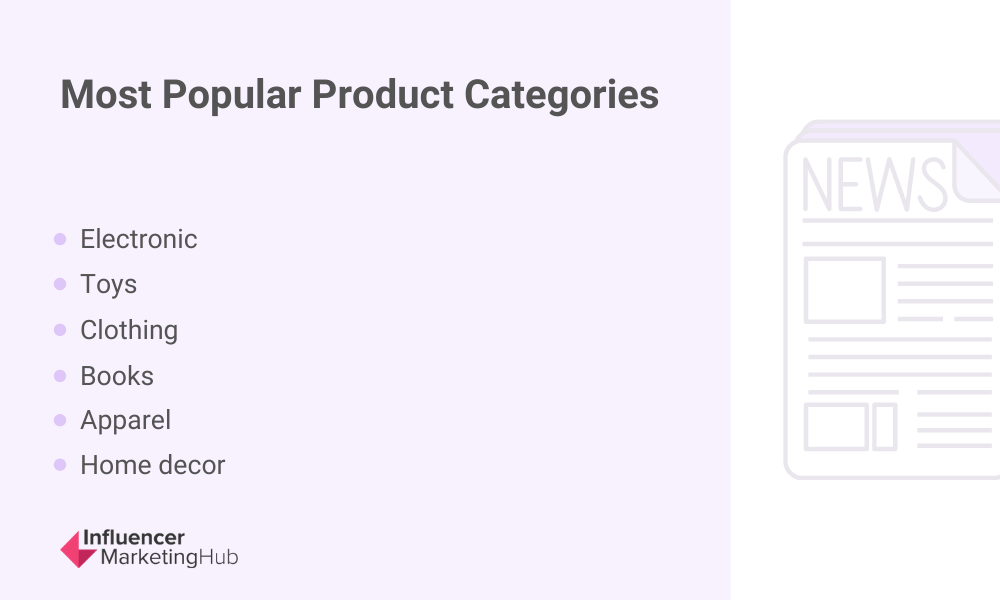
It doesn't matter if you will be taking care of everything yourself or making use of Amazon FBA, you still have to select your products with great care. Your success will ultimately depend on your ability to identify the best items and product categories that will sell quickly. Even though there are millions of people buying products on Amazon, the actual items that you sell still matter a lot (at least if you want to create a profitable business and not merely a side hustle). The number of products you sell are, to a large extent, decided by the types of items that you choose to sell. To put it bluntly, what you will sell on Amazon is most likely the most important choice that you will have to make.
At this moment, the following are some of the best product categories on Amazon:
Electronics
If you can purchase electronics in bulk, this product category can be profitable. There are many different choices and subcategories so you are bound to find electronic items to sell on Amazon. Plus, new accessories and gadgets are released regularly. That being said, Amazon already dominates this product category with their own products which can make it more challenging to stand out.
Toys
You do not need to sell sophisticated toys on Amazon. Toys that are offered in bulk or are already popular can be profitable. You can also focus on toys specifically for babies (and other baby-related products for that matter). As children grow up so fast, they quickly outgrow their toys. Also, toys are generally lightweight which helps with shipping and they are popular all-year round (just think of all the kids birthday parties throughout the year).
Clothing
This is for sure a very popular product category on Amazon, specifically exercise clothing. That being said, the market is already saturated (if not oversaturated). If you want to be successful at selling apparel on Amazon, you need to be able to offer your products at a cheap price. Consumers do not shop on Amazon for brand items.
Books
With fewer brick-and-mortar book stores, more people are turning to Amazon to buy books. As a matter of fact, that is how Amazon started in the first place. One advantage of selling books is that you can usually buy them in bulk which helps with your profit margins. It is also easy to source as they are easily available.
Alternatively, you can also publish your own books on Amazon, either in digital or paperback format. Though, in order to be successful with this approach, you need to be a talented writer and have enough time to devote to writing.
Needless to say, the list of the top product categories changes frequently. Other popular categories that you can consider include haircare products, skincare products, cosmetics, nutrition, supplements, pet products, home decor and kitchen accessories. Luckily, Amazon has a list of their most popular products according to sales that they actually update hourly. This can be a very valuable resource which you can bookmark so that you can regularly refer back to it.
The types of products that sell better on Amazon are very unique products or cheap generic products. So, if you have any of these types of products in your inventory, be sure to use Amazon’s marketplace for these.
Cheap brand-generic products sell really well on Amazon. The majority of products on Amazon sell for less than $50. A customer who really wants an original brand-name product will visit the brand’s own website and purchase it there. If they are simply searching for products without brand names, like a standard large dog bed, they will purchase the cheapest option on Amazon.
It's important to remember that Amazon is all about price. In other words, consumers who shop via Amazon are looking for the best price. This means that if you do not price your products correctly, you will not be able to sell your inventory.
If you don't have any cheap generic products in your inventory, you can also try selling very unique products. These types of products also do really well on Amazon. Though, if you do follow this approach, it is important that you pay a lot of attention to marketing your Amazon product. You will need to have an effective marketing strategy specifically for selling on Amazon to ensure your unique product gains acceptance and popularity.
So, if the products that you had in mind are either cheap generic products or very unique ideas in one of the most popular categories, the chances that you will be successful on Amazon are much better. If not, you are probably better off selling your products on your own website. Some products will simply sell better on your website and there is not much you can do about that.
Which Are the Worst Products to Sell?
While this is not the focus of our article, we do feel that we should touch a little on this subject. In short, products that do not offer real value or difference from the countless other products on Amazon are best to be avoided.
Generic products work great, but only if you sell it for the right price and still make a decent profit. Too often sellers just add another standard product item at a low price to a category that already has thousands. If you want to make an actual profit, these types of products have very small profit margins that really do not even make it worth it to try.
How Do You Identify Product Items to Sell on Amazon?
Whether you are completely new and don't have any products in mind yet or you already have a few ideas of what you would like to sell, the following 10 practical tips will help you to identify a specialized segment that can be profitable.
1. Research products on Amazon manually
Even with a wealth of tools available to automate and refine your research, completing some manual research can still be very useful. It is a good idea to begin by looking at the best-selling products in a specific product category. After you have scoured the best-selling list, turn your attention to the “Customers also bought” section which will give you some ideas for similar items.
2. Use a tool to research keywords
With the help of an Amazon keyword research tool, you will be able to check if there is actually a demand for the products that you have identified after you did some manual research on Amazon and what the search volume for that product is like. In short, it will help you to figure out if there are enough people searching for this product. If the search volume is too low, it will not be worth your while to sell and you can start your search from scratch without having wasted too much time and energy on a product that no one really wants.You can, for example, use Jungle Scout, Keyword Dominator, Sonar, Ahrefs or SellerApp for Amazon-specific keyword research.
3. Research what is selling on eBay
It is also a good idea to check out which products are selling well on eBay. You can, for example, use WatchCount.com to determine what are the top-selling products for Amazon. With WatchCount.com, you'll be able to see what are the most popular items currently selling on eBay in real time. The website summarizes the results that track votes by users whenever they add a product to their watch list and also includes information regarding unique search capabilities as well as rankings. With this information, it's much simpler to reduce the number of potential products to sell allowing you to shift all your attention to the most popular items to sell on Amazon instead. In fact, this exercise might also help you to determine if online arbitrage could work (but more about this later).
4. Find out more about the trending topics on Google Trends
Another way to reduce the number of potential products that you can sell on Amazon is to find out more about the trending topics on Google. Google Trends is a research tool that you can use to identify the most popular products (in other words, products that will sell really well). What makes this such a useful tool is that it will give you better insight into the best sellers in various categories. So, you will be able to use it even if you focus on a specialized segment of the market.
5. Use a Chrome extension
Another way that people research products and figure out how well certain products will sell on the platform is with the help of a Google Chrome extension. In short, what these extensions do is allow you to browse Amazon listings much quicker and help you to collect estimated monthly sales and monthly sales revenue for Amazon products. Unicorn Smasher, AMZScout Pro and AmazeOwl are just a couple of the extensions that you can try.
6. Identify a low-difficulty niche
If your product has more than enough demand, extra opportunities to monetize and low competition, it can be categorized as a low-difficulty niche. To help you figure out if your niche can be categorized as easier, Jungle Scout (which we mentioned earlier) will also be able to help.
7. Identify low-competition keywords
Similarly, to the previous step, you also want to identify which keywords that trigger Google product ads offer low competition. This will help you to increase the traffic to the products that you sell. To help you with this step, you can, for example, use a tool like Ahrefs.
8. Read Amazon Reviews
While you know by now that price really matters to Amazon customers, there are other things that customers also search for when they are browsing Amazon. It's key that you develop an understanding for what customers want. Bigger retailers have the financial means to gather customer feedback by means of focus groups. If you do not have the resources for this approach, the next best thing is to use Amazon reviews to identify gaps in the market. It is an affordable strategy that many vendors use to help them figure out what could be profitable to sell on Amazon.
When following this approach, you should focus on what the customers really like about the product as well as strongly dislike. You can then use this data that you have gathered to possibly tweak the product that you will be selling to meet the real needs of customers.
9. Find categories with Best Sellers Ranks
Amazon’s Best Sellers Rank (BSR) considers previous as well as recent sales of a product. So, if a product has a high Best Sellers Rank it means that the product is sought-after. Ideally, you want to stick to product categories that have a few products with Best Sellers Rank. What this shows is that there is more than one best product and that customers are open to considering a few different products before making their purchase. In other words, the market is not too crowded yet and your product will still have a chance to do well.
10. Look at the review counts
Reviews play a major role on Amazon. As Amazon wants to sell as many products as they can, they are more inclined to show products with many reviews at the top of their search rankings. So, if there are many products on the first page of the search results for a keyword that you are trying to list that have more than 50 reviews already, you will have a hard time appearing high up in the search results. While you can also generate many reviews, it does take considerable time. So, it's better, easier and faster to sell products that have not received as many reviews yet.
How Do You Decide Which Products to Sell on Amazon?

Source: Novikov Aleksey/Shutterstock.com
After you have narrowed it down to products that sell well on Amazon, you still need to decide what it actually is that you want to sell. If you are not yet completely sure, you can use the data and complete a profitability analysis.
Before you start with this exercise, the following advice will prevent a lot of issues down the line. If you have identified a specific category that you want to sell on Amazon, steer clear of categories that are aimed at Amazon brands and other big brands. You want to compete against other small businesses when you are starting out on Amazon. It just makes it a lot easier for you to build a brand and sell your products quickly.
Using data to evaluate product ideas
By taking the time to compare products and take stock of the data available, you will learn more about keywords and the product search volume. When it comes to reviewing search volume, you will want to use both Google and Amazon. This way you will get a much more accurate understanding of which products customers are trying to find online. In short, search volume looks at how many searches were completed by means of Google or Amazon. As you will be selling on Amazon, you can’t just rely on Google search volume.
With regards to keywords, as mentioned earlier your goal is to identify keywords that do not have a lot of competition. Luckily, there are many tools available that can help you with this step.
Once you have a better idea of the different products that people are trying to find on Amazon, you want to look at the competition among sellers on Amazon. If there are already many sellers on Amazon that sell the product item that you had in mind, it might not be worthwhile to sell it, especially if you won’t be able to sell it for cheaper.
Completing a profitability analysis
You also first want to work out the potential profit margins before you buy any products. This entails that you make a comparison of the retail versus wholesale pricing. Your goal is to buy your products for the best price.
Your profit margin is extremely important. The higher the profit margin, the more money you will make. As mentioned earlier, products that are cheaper than $50 sell the best on Amazon. In addition to offering good sales volume, these types of product items should also offer good profit margins.
You will also want to consider shipping costs and Amazon seller fees. For example, lightweight products that do not break easily will help to reduce the shipping costs and increase your profit margin. Ideally, the product should weigh no more than three pounds.
Where Do You Find Products to Sell on Amazon?
After you have identified which product items you can successfully sell on Amazon, you still need to source these products. There are a few places that you can try like eBay, Alibaba, AliExpress, and physical retail stores.
eBay
While eBay and other online marketplaces might not be your best bet, you could possibly find product items here that you can resell on Amazon. This is referred to as online arbitrage. As long as it is sold for less on eBay than on Amazon, there is potential. Some of the drawbacks are that your options will be limited and the competition is fierce. This might not be the place where you will have the most luck, but it still deserves some consideration especially if scaling your business is not a priority yet.
Alibaba
Alibaba is one of the best sources. Here you will find thousands of suppliers selling affordable items that you can then resell on Amazon. As many of the suppliers are also manufacturers, it's an excellent place to shop for private label products as well. The majority of the manufacturers on Alibaba will be able to help you with modification and the branding of the product items that you wish to sell. Though, one drawback is that the majority of suppliers have their own minimum order requirements that you must fulfill and will require a lot of starting capital. So, if you are working with a limited budget, rather check out a site like AliExpress.
AliExpress
AliExpress is similar to Alibaba, but its aimed at consumers and, thus, the product items are more expensive. On the upside, when using AliExpress, you do not have to worry about meeting minimum order requirements.
Physical retail stores
Similar to eBay, you might also be able to find suitable products here that you can resell on Amazon and still make a profit. This strategy, retail arbitrage, is similar to online arbitrage. In short, this means that you will buy discounted products at a retail store such as Target, Walmart or Barnes & Noble and then resell them on Amazon for more. As a matter of fact, there are apps that can help you to identify items in retail stores that you can resell on Amazon. You can, for example, check out Scoutify, Profit Bandit and ScanPower.
Wrapping Things Up
While selling on Amazon is a good place to start, this should not become your only platform for selling products. Make no mistake, Amazon is a household name across the globe, but the competition is fierce and not all types of products are profitable to sell on Amazon.
Selecting which products to sell on Amazon is possibly the most important aspect of being successful. Products that sell well are cheap brand-generic products or very unique ideas. When it comes to Amazon, it is all about price!
